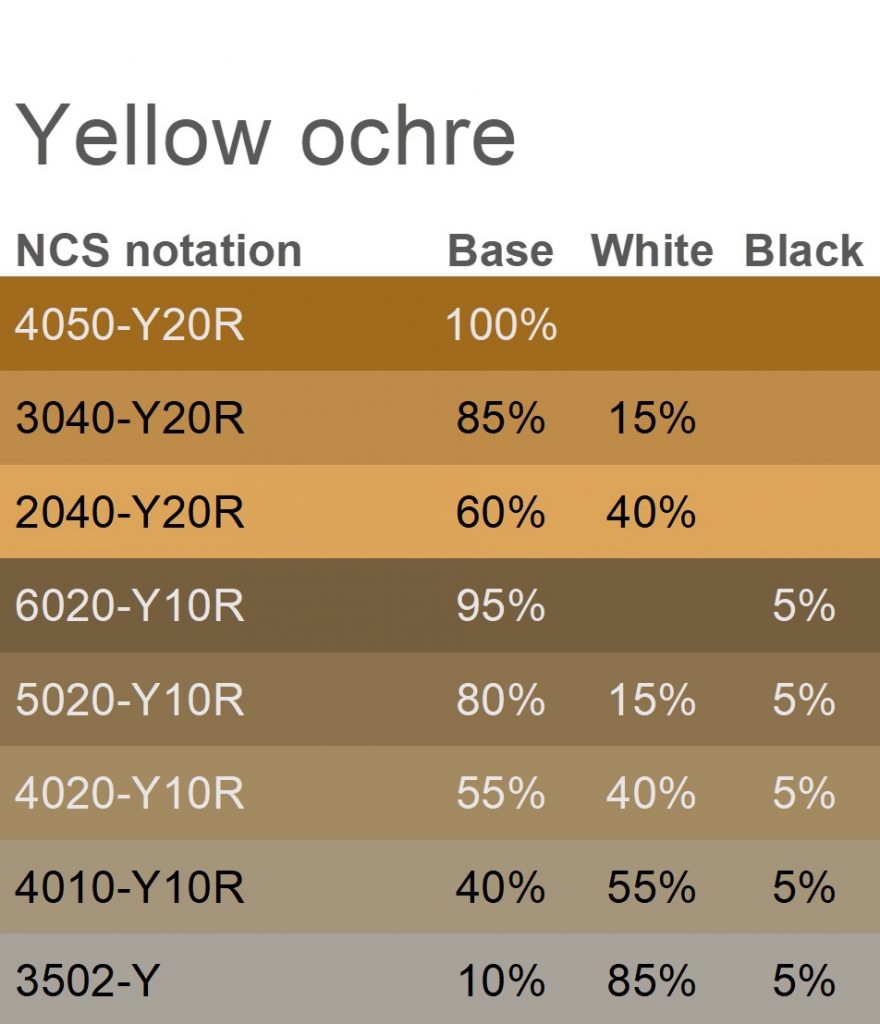
Yellow ochre
Yellow ochre is an earth pigment that gives brownish-yellow colours. It has a high degree of opacity and lightfastness. Yellow ochre has commonly been used in traditional painting, both for exterior and interior surfaces.
Yellow ochre is one of the lighter ochres. The ochres are commonly occurring clay earth pigments. The pigment consists of iron oxide and varying amounts of other minerals. The names of the ochres describe their brightness and purity in relation to other ochres, but the names of similar or even identical pigments can vary.
Yellow ochre and gold ochre are very similar, but yellow ochre is sometimes described as a little lighter and more yellow. The colours you achieve with both ochres overlap to some extent and in some cases they are not even distinguished as two different pigments.
Other yellow pigments in Kulturkulör: Iron oxide yellow, gold ochre, raw sienna
Other ochre pigments in Kulturkulör: Gold ochre, dark ochre
Mixing chart
Kulturkulör’s mixing chart describes how you can mix traditional linseed oil paints to achieve specific colours. The chart shows the result of mixing ready-made paints and the parts are stated in percent by weight.
NCS – Natural Colour System®© is a logical colour system which builds on how the human being sees colour. The NCS notation makes it possible to describe the colours of all surface materials. You can read more about the NCS system here.

There are mixing charts for a selection of the colour samples in Kulturkulör. In the sample collection you can find more nuances that you can create with linseed oil paint and traditional pigments. The mixing charts will give you an idea of how the colour changes when mixing with white and in some cases when adding black. The mixing ratios are approximate and the properties of the pigments vary.
The mixing chart is colour coded to give an idea of the result of the mixture and what colours you can achieve with the traditional pigment, but keep in mind that the colour display varies between computer screens.
